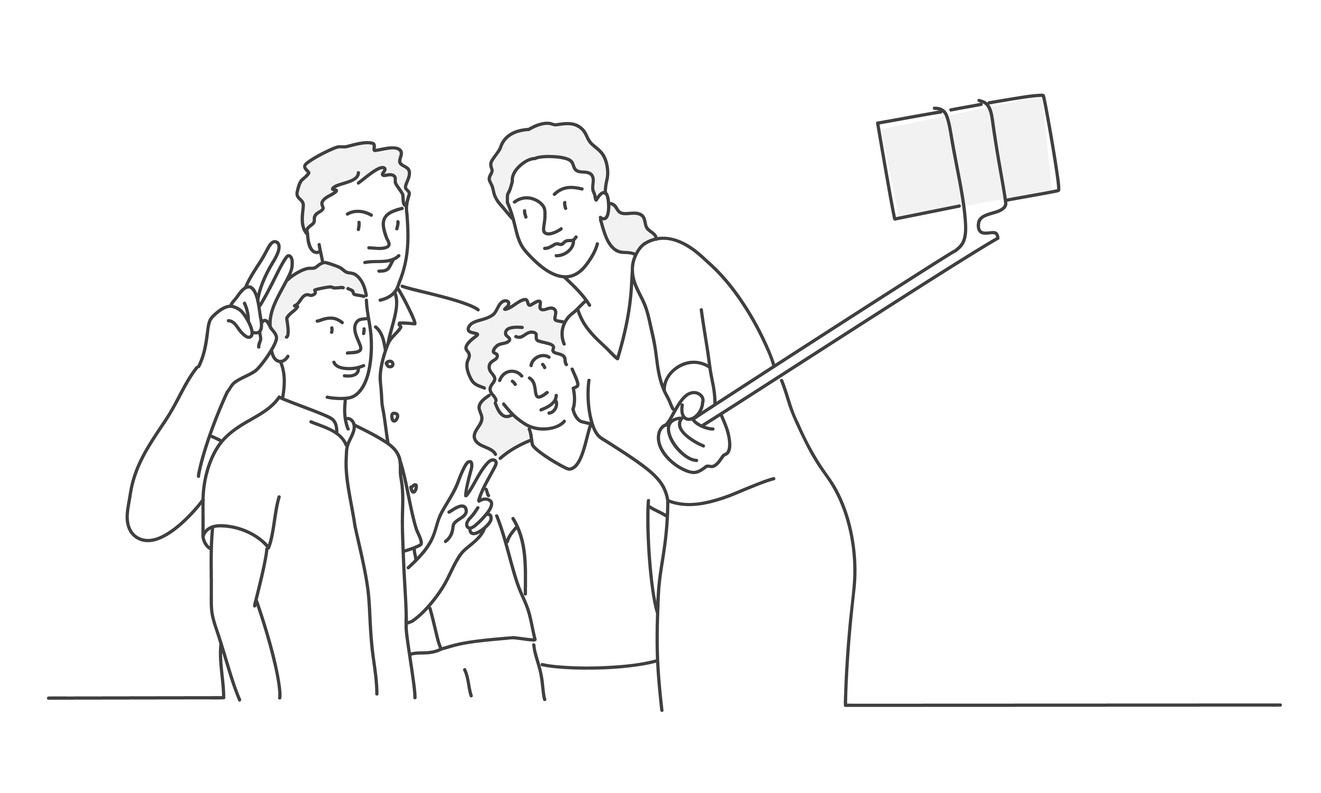
“Now that you don’t have to be perfect,
you can be good”.
(John Steinbeck, East of Eden)
Adolescents struggle often with perfectionism, shaped by pressures coming from many directions all at once: Society. Family. And worse: pressures coming from the self, which in the teen years is still fragile. The perfectionist has standards with a quality of ‘not ever quite there’. The whole point of these self-inflicted standards is that they’re ‘difficult, if not impossible, to meet’.
Certain forms of perfectionism have expanded, the result of increasing materialism, and the emphasis on image and fame. Even a brief scroll through Instagram or TikTok makes this clear: the options for self-improvement and lists of expensive bags, supplements and retinoid face creams for teenagers are dizzying. At the same time though that teenagers have become more perfectionistic as a generation, they have limited options for independence, free roaming and play spaces, and work, at least in western societies. The stakes are higher, while the opportunities for development are fewer.
Understanding perfectionism
 A recent podcast episode on perfectionism covered much of this ground. Thomas Curran and Caroline Foran discuss how it affects teens and young adults, exacerbated by social media and the cultural focus on individualistic, rather than community, achievements. To this we can add the culture of relentless, continuous self-improvement that young people can never fully let go of (though we adults are probably worse offenders). Psychologist Lisa Damour has long maintained that our preoccupation with wellness hurts adolescents. And hurts us all.
A recent podcast episode on perfectionism covered much of this ground. Thomas Curran and Caroline Foran discuss how it affects teens and young adults, exacerbated by social media and the cultural focus on individualistic, rather than community, achievements. To this we can add the culture of relentless, continuous self-improvement that young people can never fully let go of (though we adults are probably worse offenders). Psychologist Lisa Damour has long maintained that our preoccupation with wellness hurts adolescents. And hurts us all.
Curran and Foran remind us that perfectionism doesn’t only include high standards, but also overly condemning self-evaluations and a terror of making mistakes.
In a hopefully non-perfectionist scan of the vast literature on this topic, here’s what else I found. Stoeber (2018), Curran & Hill (2019) and other researchers note that adolescence is a critical time for the emergence and establishment of perfectionism. Parental and societal demands, as well as the burden teens impose on themselves have an impact. (You can see some more examples of this in the work of Flett et al. (2002) and Stoeber et al. (2018), which are worth looking at).
Hewitt and Flett (1991) group perfectionism into three types:
- Self-oriented perfectionism: expecting ourselves to be perfect.
- Socially prescribed perfectionism: believing that those around us expect us to be perfect.
- Other-oriented perfectionism: Expecting those in our environment to be perfect.
The concept of perfectionism, like all psychological terms, has followed the path of sub-categorisation. There are quizzes (such as this one) fitting us into neat boxes: ‘what type of perfectionist are you?’ But the categories don’t answer the question of what drives perfectionism, what is at stake.
How does perfectionism develop?
 It’s not just teenagers who grapple with perfectionism, of course. Parents have become equally perfectionistic, comparing themselves to others much more than parents in the past might have done. There is a panopticon style self-judgment parents feel: it comes from society, from other parents, from books about the ‘right kind of parenting’, from ideas in one’s head of what is expected from a ‘good parent’. The widespread perception of happy families projected through social media and the plethora of expert scientific books and articles can become overwhelming. This is not to say that advice doesn’t help. But often, with all the advice out there, parents can end up feeling they are failing in their parenting role. Let’s not forget: the verb ‘parenting’ with all its connotations of ‘musts and shoulds’ started being used regularly not that long ago, between the 50s and 70s. Before, people would simply be parents (noun). Now, they have to parent (verb).
It’s not just teenagers who grapple with perfectionism, of course. Parents have become equally perfectionistic, comparing themselves to others much more than parents in the past might have done. There is a panopticon style self-judgment parents feel: it comes from society, from other parents, from books about the ‘right kind of parenting’, from ideas in one’s head of what is expected from a ‘good parent’. The widespread perception of happy families projected through social media and the plethora of expert scientific books and articles can become overwhelming. This is not to say that advice doesn’t help. But often, with all the advice out there, parents can end up feeling they are failing in their parenting role. Let’s not forget: the verb ‘parenting’ with all its connotations of ‘musts and shoulds’ started being used regularly not that long ago, between the 50s and 70s. Before, people would simply be parents (noun). Now, they have to parent (verb).
Putting aside the question of blame and responsibility, perfectionism in teenagers does develop in part within the family, in day to day interacting. This is inevitable, and not a problem. We all have expectations of ourselves and those around us. But how these are expressed and received can differ enormously from family to family, from person to person: each family has its own perfectionism story, and these are interesting stories to hear about.
A teenager may imitate their parents’ high standards. Or they might feel inspired and motivated by the demands placed on them. Or they may feel burdened by these same demands. Or they may develop unrelenting perfectionism despite permissive parents. Or they may develop, instead, the same unrelenting perfectionism with harsh parents. There is really no standard here, though some patterns tend to re-occur. Curran and Foran highlight in their podcast, for example, how today’s work insecurity may in some cases not match the unrealistic parental expectations teenagers face.
Psychoanalytic perspectives on perfectionism
Psychoanalytic theory offers an in depth exploration of how perfectionism becomes entrenched. I’ll mention two ideas. The first, about what ordinary parents do in day to day life. The second, on a type of depression that involves high levels of perfectionism and self-judgment.
Idea one: The good enough mother
Donald Winnicott created, years ago, a simple way to encapsulate all this: he coined the term “good enough mother” (or ‘”good enough parent”, as we might say today). This idea was outlined in the 50s, at first to distinguish Winnicott’s views from the Kleinians, who talked about the ‘good’ and ‘bad’ internal mother within us. Winnicott, instead, was interested in ordinary, everyday parenting, the small things parents do naturally but hardly notice. He believed that a ‘good enough parent’ creates for the infant the illusion of omnipotence through attending to their needs as closely as possible at the start of life. This close attention gradually becomes less attuned, step by step allowing for gaps and imperfections. The baby can now learn to wait a bit. Everyone else’s needs can be considered too. Winnicott said:
Winnicott goes into more depth in his 1960 papers, ‘The theory of the parent infant relationship’ and “Ego Distortion in Terms of True and False Self”. The best a mother can do is to be “sensitively good enough” at the beginning, enabling the infant’s illusion of omnipotence. A parent who consistently though doesn’t meet the infant where they are may contribute to the establishment of a False Self, the result of an ongoing mismatch between the infant’s gestures and the parents’ responses.
When healthy omnipotence and ordinary self-centredness don’t develop adequately, the child may grow into an adolescent and adult continuously striving for power and potency but never quite feeling adequate. If the early environment isn’t ‘good enough’ or equally if it’s ‘too good’ – the result can sometimes be an intense, depressive, unrelenting perfectionism. Which brings us to idea two.
Idea two: Perfectionism and introjective depression
 When we think of perfectionism, what immediately comes to mind is a depressive state. This is not by chance: in psychoanalytic theory we find a link between perfectionism and a specific type of depression, called ‘introjective depression’.
When we think of perfectionism, what immediately comes to mind is a depressive state. This is not by chance: in psychoanalytic theory we find a link between perfectionism and a specific type of depression, called ‘introjective depression’.
Sidney Blatt (1995) described two types of depression, which look quite different: anaclitic and introjective. Anaclitic depression involves feelings of dependence and helplessness, a constant subjective experience of emptiness, and a heightened need for care that can feel like a gnawing hunger that can’t easily be satisfied. This depression can worsen when there are losses (e.g., when a partner leaves or there’s a bereavement).
Introjective depression is quite different. It involves harsh, malignant perfectionism, and is usually recognised by the accompanying feelings of inferiority, excessive self-criticism, guilt and worthlessness. The typical triggers here are failures or setbacks in achievement. Adam Phillips wrote in Promises Promises that perfectionism is ‘a form of hatred’, and this is what introjective depression looks like: the self transforms into both the attacker and the attacked, never allowed to be good enough. I think this is the depression Freud describes as ‘melancholia’ in his classic paper.

Maria, thank you for taking the time to write this. I really enjoy reading your thoughtful blogs. I was interested in the absence in this paper of the effect of the school system on the rise of perfectionism. I think the way the UK’s education system has evolved contributes greatly to young people’s perception of what they could achieve and how the fall short.
Thanks for the comment. I don’t work in schools though I collaborate with them a lot – they are under immense pressure in recent years so whatever is happening is in that context… but my general impression is that the school system in the UK probably drives students in opposite directions which can be confusing. Eg too much of an emphasis of rigid rules and behavioural policies with common sense sometimes missing, while at the same time on the other extreme sometimes too much of an emphasis on ‘mental health’ using diagnostic labels rather than ordinary language. I feel for teachers though as they aren’t getting enough support from social services & CAMHS!
Such a helpful article that resonates with trying to understand the immerse pressure felt by patients, parents and clinicians. Thank you
Thank you Ruth! yes perfectionism seems to be increasing in recent years, that’s my sense.